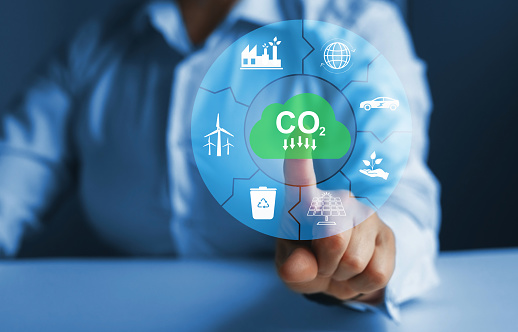Source: Finance Derivative
Jamil Ahmed, Distinguished Engineer at Solace
The energy sector has faced many disruptions and challenges in recent years, from pipeline disruption to the growing demand for hydrogen. However, the most significant of all of these is the global desire to decarbonise. The growing concern over fossil fuels has created intense pressure for businesses to transition towards renewable energy sources and cut carbon emissions. Governing bodies have begun to impose regulations on organisations to force them to cut emissions by 3.4 gigatons of carbon dioxide equivalent (GtCO2e) a year by 2050, which amounts to a 90 per cent reduction in current emissions.
The constant development of markets and digital transformations will only increase the demand for energy in the future across all industries. Therefore, reducing emissions, in reality, is no small feat, however harsh or impressive the targets may be. To make decarbonisation a reality in the near term, businesses must adopt an inward-looking strategy to reduce emissions through their own operations. These are termed Scope 1 emissions and refer to emissions released as a direct result of one’s own current operations. Achieving this requires companies to streamline their operations, and improve their internal visibility to measure and track energy consumption.
Detecting emissions
The major challenge companies face in accurately measuring their energy consumption lies in overcoming the mass amounts of siloed data within their system. These data silos not only diminish productivity but also bury these useful insights, compiled into a mountain of data that is hard to identify and analyse. Ultimately, data silos are a result of organisational infrastructure built for a previous era, one with limited technological adoption, and limited pathways for dataflows. Over time these have created complex organisational barriers.
The lack of data transparency in organisational infrastructure is severely undermining businesses’ ability to gain insight from their existing data. This also impacts their ability to share data with external partners in search of meaningful solutions for decarbonisation. The value of data sharing cannot be overstated when searching for innovative solutions. A recent study shows that 45% of businesses in the energy sector see analytics and innovation as critical tools. With the entire energy sector’s ability to effectively decarbonise hinging on data sharing to drive innovation, gaining greater data insights are non-compensatory.
Another major consideration in decarbonisation is power reliability planning when transitioning to renewable energy sources. Solar and wind energy rely on changeable weather factors for operability, the varying levels of power readiness in these energy sources make them difficult to implement into the national grid. This makes reliably planning this an increasingly complex and important part of the decarbonisation journey as the sector must test for long-term stability and the potential for energy transfers and storage. A solution must be found that can address these real-time concerns.
Reliability in Real-time
Real-time data is the information that is delivered immediately after collation and enables businesses to respond to information at lightning speed. Real-time data has a host of usages in the energy sector, from alerting major weather changes that may impact power reliability to detecting overheating or electrical wastage in appliances. These information transfers are known as an ‘event’ that requires further action or response.
Real-time capabilities play a major role in overcoming data transparency issues associated with the sector, in its ability to connect interactions across systems and processes could enable energy providers to effectively identify opportunities in reducing energy wastage.
Event-driven Decarbonisation
Enter event-driven architecture (EDA), the structure that underpins an organisation’s ability to view event series that occur in their system. EDA decouples the events from the system so that they can be processed and then sent in real-time as a useful information resource. This can then be analysed by resource companies to assist with optimising decarbonisation initiatives.
The strength of EDA is its scalable integration platform, as this allows companies to manage enormous quantities of data traffic coming from multiple data streams and energy sources. From this, energy companies can develop durable systems by aggregating information. This can then be sent to control systems to identify power outages or extreme weather events and conditions.
To achieve this, an architectural layer known as an event mesh is required. An event mesh enables EDA to break down data silos and facilitate the real-time integration of people, processes and systems across geographical boundaries. Implementing an event mesh also upgrades and streamlines existing systems/processes to enable better data transparency in real-time data sharing. It is unsurprising that given the great benefits of EDA both in terms of its scalability, durability and agility that a recent study found 85% of organisations surveyed view EDA as a critical component of their digital transformation efforts.
Decarbonising for the future
Regulations on the energy sector are rapidly increasing, most recently the US Senate passed the Inflation Reduction Act (IRA) on August 6th of this year. This Act signals the intense pressure on the energy sector to immediately undertake significant decarbonisation initiatives. It is designed to accelerate the production of greener and more renewable energy sources such as wind and solar. Once nations like the US have begun higher production of the technology that can harness these energy sources, others will follow suit. The only way the large-scale adoption of renewable energy sources will occur is if businesses build real-time capabilities to become event-driven businesses. Only then can the transition to decarbonisation and achieving net zero become a reality.

